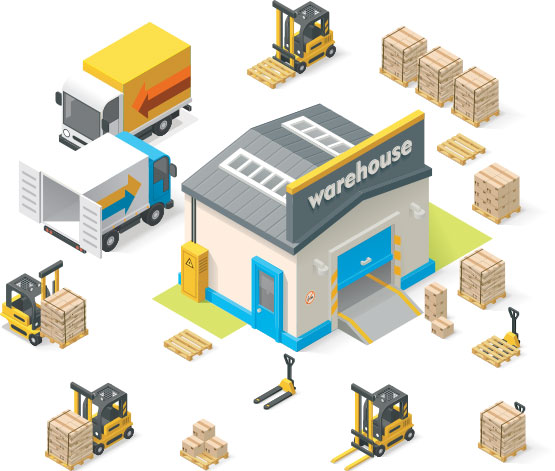
The design and layout of an effective warehouse in Howrah are essential for businesses looking to optimize their operations in the Indian market. From maximizing storage capacity to improving the flow of goods and minimizing the risks of accidents, several factors must be considered while designing a warehouse in Kundli.
In this blog, we will explore some of the best practices of warehouse design and layout in India. These practices will enable businesses to create efficient, safe, and suitable warehouses for their operations.
Why are Design and Layout Important For Warehouses in India?
Design and layout are essential for warehouses because:
- It maximizes storage space by helping businesses in making the most of their storage space, maximizing capacity, and minimizing the need for additional features.
- It improves goods flow by reducing the time and effort required to move and store products.
- It minimizes the risks of accidents by improving safety for employees and protecting assets.
- It enhances efficiency by reducing the distance that goods need to travel. It minimizes the risk of errors or delays.
- It reduces costs by minimizing the need for additional facilities and improving efficiency.
Best Practices of Warehouse Design and Layout in India
Consider Ergonomics
One of the key considerations when designing a warehouse in Ahmedabad is the ergonomics of the space. This refers to the comfort and safety of employees as they work in the warehouse. For example, consider the height of the shelving and the distance that workers will need to reach to access products. Also, ensure that there is sufficient lighting and ventilation to create a comfortable and safe work environment.
Use Technology
Technology can play a key role in optimizing warehouse design and layout. For example, automation and robotics can help streamline the flow of goods and reduce the need for manual labour. Data analytics tools can help warehouse managers make data-driven decisions on issues such as inventory levels and supply chain efficiency. And the Internet of Things (IoT) can help track and monitor assets in real-time, improving efficiency and reducing the risk of errors or losses.
Collaborate with Stakeholders
When designing a warehouse in Howrah, it is important to involve all relevant stakeholders in the process. This includes employees, management, and any external partners such as logistics companies. By gathering input from these different perspectives, businesses can create a warehouse that is well-suited to the needs of all parties.
Plan For Future Growth
When designing a warehouse in Ahmedabad, it is important to consider the potential for future growth. This might include factors such as the need for additional storage space or the possibility of expanding into new markets. By planning for future growth, businesses can create a warehouse that is flexible and adaptable, allowing them to meet changing needs over time.
Utilize Vertical Space
In urban areas where land is at a premium, it can be useful to utilize vertical space in the warehouse. For example, businesses might consider using mezzanines or multi-level shelving to create additional storage capacity.
Focus on Efficiency
An efficient warehouse layout can help streamline the flow of goods, reducing the time and effort required to move and store products. To achieve this, consider the proximity of different areas of the warehouse in Kundli. It includes receiving, storage, and shipping. In addition, look for ways to minimize the distance that goods need to travel and reduce the risk of errors or delays.
Conclusion
Overall, the best practices for warehouse design and layout in India involve considering ergonomics, using technology, collaborating with stakeholders, planning for future growth, utilizing vertical space, and focusing on efficiency.
Also Read: Approaches to Successful Warehouse Management in India